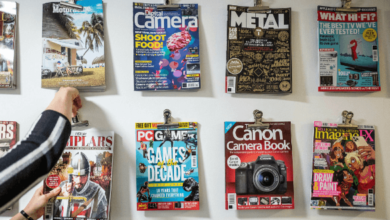The Ultimate Guide to Becoming a Virtual DJ: Tips and Tricks for Success

In recent years, the world of DJing has evolved significantly, with the rise of virtual DJing becoming a prominent trend. Virtual DJing offers aspiring artists the opportunity to showcase their talent and create electrifying mixes without the need for expensive equipment or physical media. This guide will walk you through the essential steps and provide valuable tips to help you embark on your journey to becoming a successful virtual DJ.
Understanding Virtual DJing
Virtual DJing, also known as digital DJing, involves using software and a computer to mix and manipulate music tracks seamlessly. The software emulates traditional DJ equipment, including turntables, mixers, and effects units. This approach has opened up new possibilities for creativity and accessibility, making it easier for anyone with a passion for music to dive into DJing.
1. Master the Basics of DJing
Before diving into the virtual realm, it’s crucial to have a solid foundation in traditional DJing principles. Familiarize yourself with the basic components of DJ equipment, such as mixers, decks, and headphones. Understand the structure of music, such as beats, bars, phrases, and key signatures. Practice beatmatching and blending tracks manually to gain a deep understanding of the art of DJing.
2. Choose the Right Virtual DJ Software
Selecting the right software is critical to your success as a virtual DJ. Several popular virtual djs software options are available, each offering unique features and functionalities. Some of the top choices include:
Serato DJ: Known for its user-friendly interface and excellent hardware integration.
VirtualDJ: Offers a wide range of features, making it suitable for both beginners and experienced DJs.
Traktor Pro: Renowned for its advanced performance capabilities and extensive effects library.
Rekordbox DJ: Designed for use with Pioneer DJ equipment and provides seamless track management.
Explore the various software options, read reviews, and consider the features that align with your needs before making a decision.
3. Assemble a Quality DJ Setup
While virtual DJing doesn’t require the physical hardware used in traditional setups, having some essential equipment will enhance your performance and overall experience. Invest in a reliable computer with ample processing power, a high-quality audio interface, and a set of professional-grade headphones. Additionally, a DJ controller or MIDI controller can provide tactile control over your virtual decks and effects, making your performances more engaging and intuitive.
4. Build a Diverse Music Library
As a DJ, your music library is your most valuable asset. Aim to have a diverse collection of tracks from various genres and time periods to cater to different audiences and events. Acquire your music legally, through platforms like Beatport, Bandcamp, or digital music stores, to ensure you have the necessary rights to perform and distribute the songs.
5. Practice, Practice, Practice
Becoming a skilled virtual DJ takes time and dedication. Regular practice is crucial to improving your skills, mastering new techniques, and refining your style. Experiment with different genres, tempos, and mixing styles to develop your unique sound. Use cue points, loops, and effects to add flair to your mixes and transitions.
6. Understand the Art of Harmonic Mixing
Harmonic mixing involves blending tracks that are in compatible keys, creating smoother and more pleasing transitions. Learning the basics of music theory will greatly benefit your harmonic mixing skills. Many virtual DJ software applications offer key detection features that can help you identify compatible tracks easily.
7. Learn to Read the Crowd
As a DJ, your primary goal is to entertain the crowd and keep the dancefloor alive. Pay close attention to the audience’s reaction to your mixes and track selections. Adjust your playlist based on the vibe and energy of the crowd. Be open to requests, but also maintain control over the direction of the music to ensure a consistent and enjoyable experience for everyone.
8. Record and Share Your Mixes
Recording your mixes allows you to analyze your performance objectively and identify areas for improvement. You can also use these recordings to create a mixtape or share them on platforms like SoundCloud or Mixcloud to showcase your talent to a broader audience.
9. Engage with the DJ Community
Connect with fellow DJs and music enthusiasts by joining online forums, social media groups, or local DJ meetups. Engaging with the DJ community provides opportunities for networking, learning from experienced DJs, and staying up-to-date with the latest trends and technology in the industry.
10. Embrace Creativity and Experimentation
Virtual DJing offers a vast array of tools and possibilities for creative expression. Don’t be afraid to experiment with different effects, loops, and samples to develop a signature sound that sets you apart. Embrace your creativity and take risks to discover your unique style as a virtual DJ.
Conclusion
Becoming a successful virtual DJ requires a blend of technical skill, musical knowledge, and creative flair. With the right software, equipment, and dedication to mastering the art, you can unlock boundless potential in the world of virtual DJing. Remember, the key to success lies in consistent practice, understanding your audience, and always being open to learning and growth as an artist. So, immerse yourself in the world of virtual DJing, and let your passion for music shine through your electrifying mixes.




